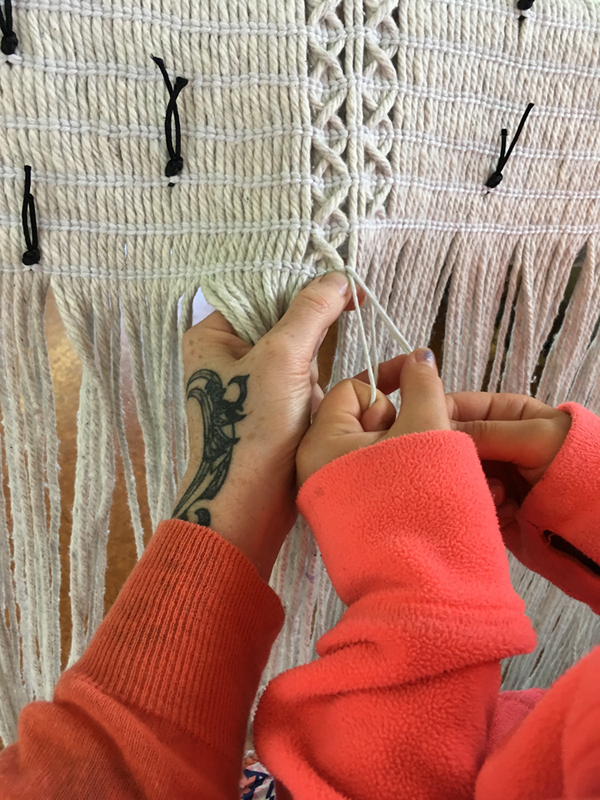Craft, Relational Aesthetics and Ethics of Care
DOI:
https://doi.org/10.18432/ari29413Anahtar Kelimeler:
craft- relational aesthetics- ethics of careÖzet
A conceptual framework for looking and listening operates within aesthetic and affective moments when crafting objects. Assembling and modifying Sea Balls into arranged composition is my craft process that I use to access a state of mind play. Each found and modified object represents a key theoretical framework that I connect and re-organize in relation to each other to produce new ways of perceiving. Considerations of Massumi, Fish and Jameson’s (2002) notion of perception and how I experience affect through embodiment in the moment of re-crafting and re-assembling items is central to the practice. Emergent ideas occur through re-crafting found objects in conjunction with broader considerations of relational aesthetics.
Referanslar
Ahmed, S. (2003). Affective economies. Social Text, 22(2),117-139.
Bignall, S. (2010). Postcolonial agency: Critique and constructivism (Plateaus). Edinburgh, UK: Edinburgh University Press.
Burdick, J. (2018). Beneath reason: Activist public pedagogies for the post-truth moment. Public Pedagogies Institute. Retrieved from http://www.publicpedagogies.org/news/activist-public-pedagogies-for-the-post-truth-moment/
Chou, M., & Bleiker, R. (2013). Betrayed by democracy: Verbatim theater as prefigurative politcs. In M. Nancy & S. Love (Eds.), Doing democracy: Activist art and cultural politics (pp. 231-256). New York: SUNY Press.
Ettinger, B., & Massumi, B. (2006). The matrixial borderspace. Minneapolis, MN: University of Minnesota Press.
Haraway, D., & Randolph, L. (1997). Modest−witness@second−millennium. femaleman−meets−oncomouse: Feminism and technoscience. London, UK: Routledge.
Held, V. (2006).The ethics of care. Personal, political, and global. Oxford: Oxford UP.
Kompridis, N. (2013). Recognition and receptivity: Forms of normative response in the lives of the animals we are. New Literary History, 44(1), 1-24. doi:10.1353/nlh.2013.0003
Lazzeri, C. (2009). Recognition and redistribution: Rethinking N. Fraser's dualistic model. Critical Horizons, 10(3), 307-340.
Massumi, B., Fish, S., & Jameson, F. (2002). Parables for the virtual. Durham, NC: Duke University Press.
Ngarrindjeri Native Title Management Committee. (2006). Ngarrindjeri Nation. Ngarrindjeri Nation yarluwar-ruwe plan: Caring for Ngarrindjeri sea country and culture. Ngarrindjeri
Tendi, Ngarrindjeri Heritage Committee, Ngarrindjeri Native Title Management Committee. Camp Coorong, AU: Ngarrindjeri Land and Progress Association.
Puig de La Bellacasa, M. (2012). ‘Nothing comes without its world’: thinking with care. Sociological Review, 60(2),197-216.
Rigney, L.-I. (2001). A first perspective of Indigenous Australian participation in science: Framing Indigenous research towards Indigenous Australian intellectual sovereignty. Retrieved from https://ncis.anu.edu.au/_lib/doc/LI_Rigney_First_perspective.pdf
Rigney, L-I. (2007). Indigenist research epistemologies: A historical journey of conviction, contradiction and transformation (Doctoral thesis). Flinders University, Adelaide, AU.
Rigney, D., Hemming, S., & Berg, S. (2008). Letters patent, native title and the crown in South Australia. In M. Hinton, D.
Rigney & E. Johnston (Eds.), Indigenous Australians and the law, (pp.161–78).Sydney, AU: Routledge-Cavendish.
Rose, D. (1999). Taking notice1. Worldviews: Global Religions, Culture, and Ecology, 3(2), 97-103. Retrieved from https://doi-org.access.library.unisa.edu.au/10.1163/156853599X00081
Tuhiwai Smith, L. (2012). Decolonizing methodologies: Research and Indigenous peoples. London, UK: Zed Books.
Springer, S. (2012). Neoliberalism as discourse: Between Foucauldian political economy and Marxian poststructuralism. Critical Discourse Studies, 9(2), 133-147.
Warburton, E. (2004). Who cares? Teaching and learning care in dance. Journal of Dance Education, 4(3), 88-96
Weir, J. (2008). Connectivity. Australian Humanities Review, 45,153-164.
İndir
Yayınlanmış
Nasıl Atıf Yapılır
Sayı
Bölüm
Lisans
Telif Hakkı (c) 2019 Art/Research International: A Transdisciplinary Journal

Bu çalışma Creative Commons Attribution-NonCommercial-NoDerivatives 4.0 International License ile lisanslanmıştır.
Authors who publish with Art/Research International agree to the following terms:
a. Authors retain copyright and grant the journal right of first publication and the right to sublicense the Contribution, in the form in which it is published by the journal, to others under the terms and conditions of the of the Creative Commons Attribution-NonCommercial-NoDerivs (CC BY-NC-ND) that allows others to download the work and share the work with others with an acknowledgement of the work's authorship and initial publication in this journal, but they cannot change the work in any way or use any part of the work commercially.
b. Authors are able to enter into separate, additional contractual arrangements for the non-exclusive public distribution and display of the journal's published version of the work (e.g., post it to an institutional repository or publish it in a book), with an acknowledgement of its initial publication in this journal.
c. Authors are permitted and encouraged to post their work online (e.g., in institutional repositories or on their website) prior to and during the submission process, as it can lead to productive exchanges, as well as earlier and greater citation of published work (See The Effect of Open Access).
d. Authors wishing to include items (such as images or other media, or any creative works of others whether previously published or not) must contact the original copyright holder to obtain explicit permission to publish these items in Art/Research International. Writing permission should include: the title(s) of any copyrighted work, original place of publication if applicable, and an acknowledgement of having read Art/Research International's copyright notice. Authors are responsible for obtaining this permission and keeping it in their own records for later verification.



